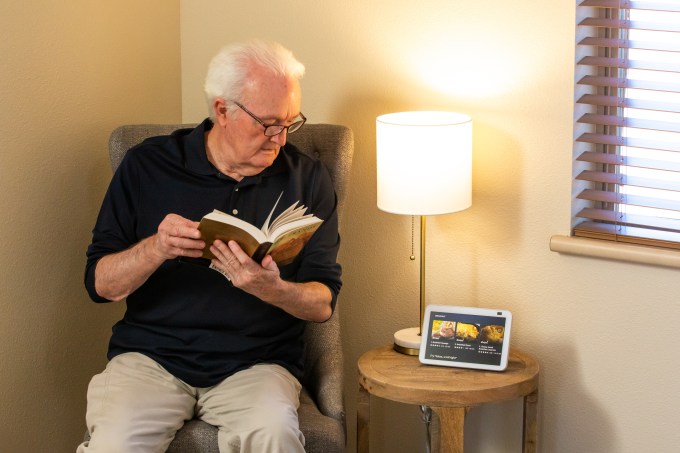Of the many labor issues that arose during the Covid-19 pandemic, one major focus was on healthcare workers, and specifically the challenge of staffing medical environments at a critical moment, during a public health crisis. Today, a healthcare staffing management platform called Lantum is announcing $15 million in funding, underscoring both how it came into its own over the last two years, and the business it has in its pipeline going forward.
Finch Capital led the round, with Piton Capital, Samos, and strategic backer Cedars-Sinai Hospital also participating.
Lantum is based out of London and works extensively with the UK’s National Health Service: 20 out of the NHS’s 40 integrated care systems, covering thousands of healthcare service providers, have already signed up to manage staffing through Lantum’s platform, with a bulk of that business inked since the pandemic. In the last 12 months, the startup said that booking volumes more than doubled, onboarding 14,000 additional clinicians.
Lantum’s sweet spot is to make it easier for healthcare organizations to break down silos and make it easier to move staff around as and when its needed most in operations that are adjacent to each other.
“The NHS recognized that the way to conquer its workforce crisis was by sharing each organization’s workforce with one another,” Lantum’s CEO and founder Melissa Morris (pictured, right) said in an interview.
 She said she first became aware of the issue when she was doing consultancy work for the NHS to try to address this issue. “I saw how chaotic workforce management was,” she recalled, finding that a whopping 70% of the entire system’s budget was going towards staffing and workforce costs. “Why would you not focus on that?”
She said she first became aware of the issue when she was doing consultancy work for the NHS to try to address this issue. “I saw how chaotic workforce management was,” she recalled, finding that a whopping 70% of the entire system’s budget was going towards staffing and workforce costs. “Why would you not focus on that?”
Lantum’s platform enables care centers — be they vaccination or specialist clinics, hospital departments, GP surgeries (local family doctors’ offices), telehealth centers, or something else — list what help they need and when. It then allows qualified contract, permanent, and temporary, paid and unpaid NHS workers who are open to taking those shifts find them based on skillsets, location and time, and sign up for them, and then eventually get paid for their work.
In doing this, Lantum also effectively creates a comprehensive database of active and less active individuals, and what they are able to do in terms of their skills and availability, so that an organization can get a better picture of who is potentially available and where they might need to work on staffing and skilling up.
The approach seems simple enough, and frankly not unlike any other staffing platform on the surface. The difference here, Morris said, is that Lantum is purpose-built for the specificities of staffing in a healthcare system. More general purpose platforms are not able to onboard new people and verify qualifications, and then run a system that only enables those people to connect with jobs they are capable of doing, not those that they cannot. And those general-purpose tools do not cater to the needs of the healthcare centers — the employers — to a have an interface that makes it easy to create and list jobs that target those people.
Covid-19 put front-line healthcare workers center-stage in a critical way because they were collectively, by virtue of their jobs, perhaps the group most exposed to those with infections. So being able to at least better organize who worked when and where, and how to make that as efficient as possible, became especially important.
I should point out that I experienced Lantum’s usefulness first-hand. When the U.K.’s vaccination campaign first kicked off, I was one of the more than 540,000 people in the country who have to-date volunteered their time to help with the effort.
At first, the call-outs for volunteers with specific skills were chaotic and haphazard. I was an “admin” who was trained to look up, update, and find and flag problems in individuals’ health records when they came in for their shots; others were trained to give vaccines; others were “stewards” who helped usher people through the process.
All of us would have found out volunteering likely through word-of-mouth or by going to get our own vaccines. We’d email a person and get added to a mailing list. Then, usually the night before or maybe a day before, we would get an email with the call-out for help.
The people running the volunteers were usually very overworked nurses and other professionals who were themselves usually giving up free time to volunteer above their normal workdays. Often, it never felt like any single person’s dedicated job to just stay on top of it all.
Even with what were regular vaccine days each week, it was hard to know if you’d be called in, or for them to know who they might need to help, until the very last minute. I wondered many times why the nurses corralling volunteers in my local network of four clinics didn’t at least use a spreadsheet to try to get people to sign up in advance. Then suddenly Lantum appeared, and things got a lot easier.
The Cedars-Sinai investment and relationship — which are important not just because of the profile of that hospital, but because it’s Lantum’s first big foray in U.S. market and the U.S. health system — has been several years in the making, Morris said.
“We first started working with Cedars-Sinai in LA started before the pandemic, but then we had to put that on hold,” she said. Now it’s providing scheduling for the hospital’s ICU staff. “It’s eye opening how similar the problems are in the U.S. even though the system is so different from the U.K.’s,” she said. Many people were indeed using pen, paper and excel spreadsheets, she said, a poor substitute for a smart system that worked end to end, from the creation of the job, through to finding suitable candidates, having them sign up and finally paying them.
A part of the funding will be used to continue staffing up Lantum and developing tools for its UK customers, but another part will be going towards the U.S. expansion. Morris described Cedars-Sinai as a “beachhead” for the latter strategy. It may also involve raising more money in this round after Lantum got significant interest from other investors as it raised this $15 million.
“Lantum has had a momentous year. Their staff count has doubled in the last year alone, as they work to help those on the frontline of this pandemic,” said Aman Ghei, a partner at Finch Capital, in a statement. “Digital transformation must be at the forefront of the NHS [and] Lantum is well-positioned to continue to deliver solutions that do better by the NHS, for its staff and for its patients.”

